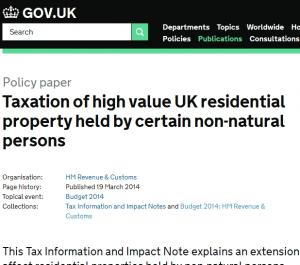



The government has introduced a new measure to try to curb buy-to-leave invesments in London. The measure is applicable throughout the UK but only applies to homes valued at over £500,000 so London would seem to be the area where owners will be most affected.
The measure comes in the wake of various stories about homes in London left to stand empty whilst they appreciate in value and are applicable to homes valued between £500,000 and £2 million.
The measures apply only to properties that are owned by "non-natural persons" ie. partnerships or limited companies. This is often the case with homes bought strictly for investment purposes. Homes owned by non-natural persons are considered to be "enveloped".
"the dwelling is said to be 'enveloped' because the ownership sits within a corporate 'wrapper' or 'envelope'." (HMRC Guidance)
The government estimates there are 8,000 businesses that hold or buy such properties.
There are three main strands to the new measures:
- a hike in stamp duty to 15% on acquisition
- an annual tax called Annual Tax on Enveloped Dwellings (ATED)
- CGT at 28% on any gain on disposal
